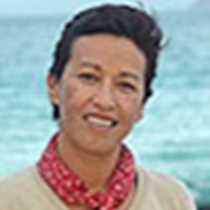Urvina Bay & Tagus Cove
Today we are still at the newest area of the Galápagos archipelago. Isabela Island is the only island built by six large volcanoes making the largest of all the islands.
Right at the heart of Isabela we find Urvina Bay, which used to be part of the sea floor until 1954 when an eruption pushed part of the underwater rocks out of the surface of the sea up to 15 meters, stranding every kind of living being and leaving them exposed to the air. Our long walk took us along the shoreline where we found shells of tube worms, oysters and corals as if they were silent witnesses of this sudden event.
Young Galápagos hawks delighted us with their tameness, landing and posing right in front of us. Marine and land iguanas were basking on the rocks to warm up their bodies before starting to look for their favorite foods. Walking inland we had our first sightings of the very famous Galápagos tortoises that have descended from the slopes of Alcedo volcano to lay their eggs on the dry soil near the beaches.
After a navigation of about two hours, we found ourselves at a location on the west of Darwin volcano known as Tagus Cove. This place is full of human history. It was once used as a favorite anchorage of pirates, buccaneers, whalers and even scientific expeditioners and worldwide explorers.
Some of the early explorers have carved graffiti of their ships’ names as a mean of communication along the cliffs. Walking uphill we saw Darwin’s Lake, formed in the center of a cinder cone. Then we walked inland to find spectacular volcanic scenery framed by the view of Fernandina Island and the northern volcanoes of Isabela Island.
We went out on the kayaks to explore the shoreline teeming with life. Blue-footed boobies, flightless cormorants, Galápagos penguins, great blue herons, and brown pelicans (amongst others) were feeding in the nutrient-rich waters. Pacific green sea turtles lay flat on the surface to be able to catch the last sun rays that will warm them up and help them sleep throughout the night on the sandy bottom of Tagus Cove.
It has been without doubt another wonderful day in paradise.




